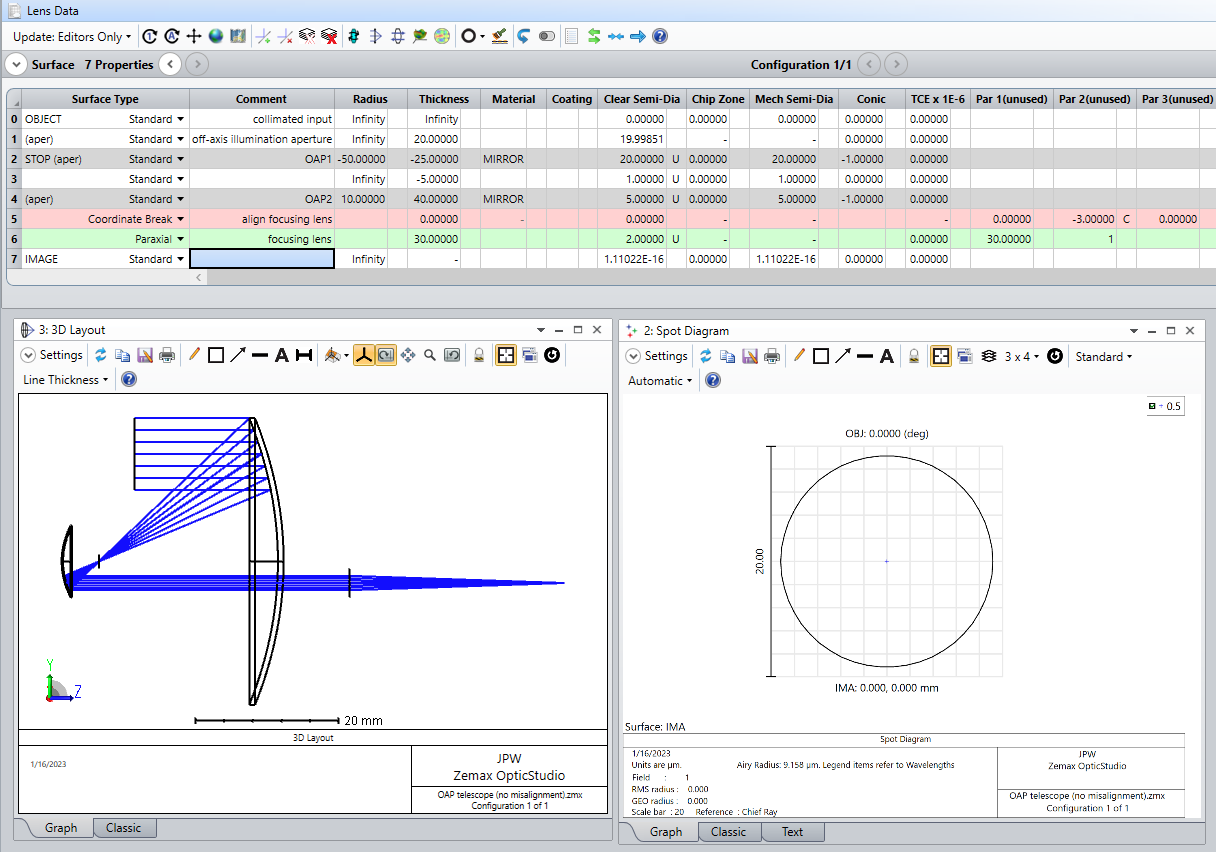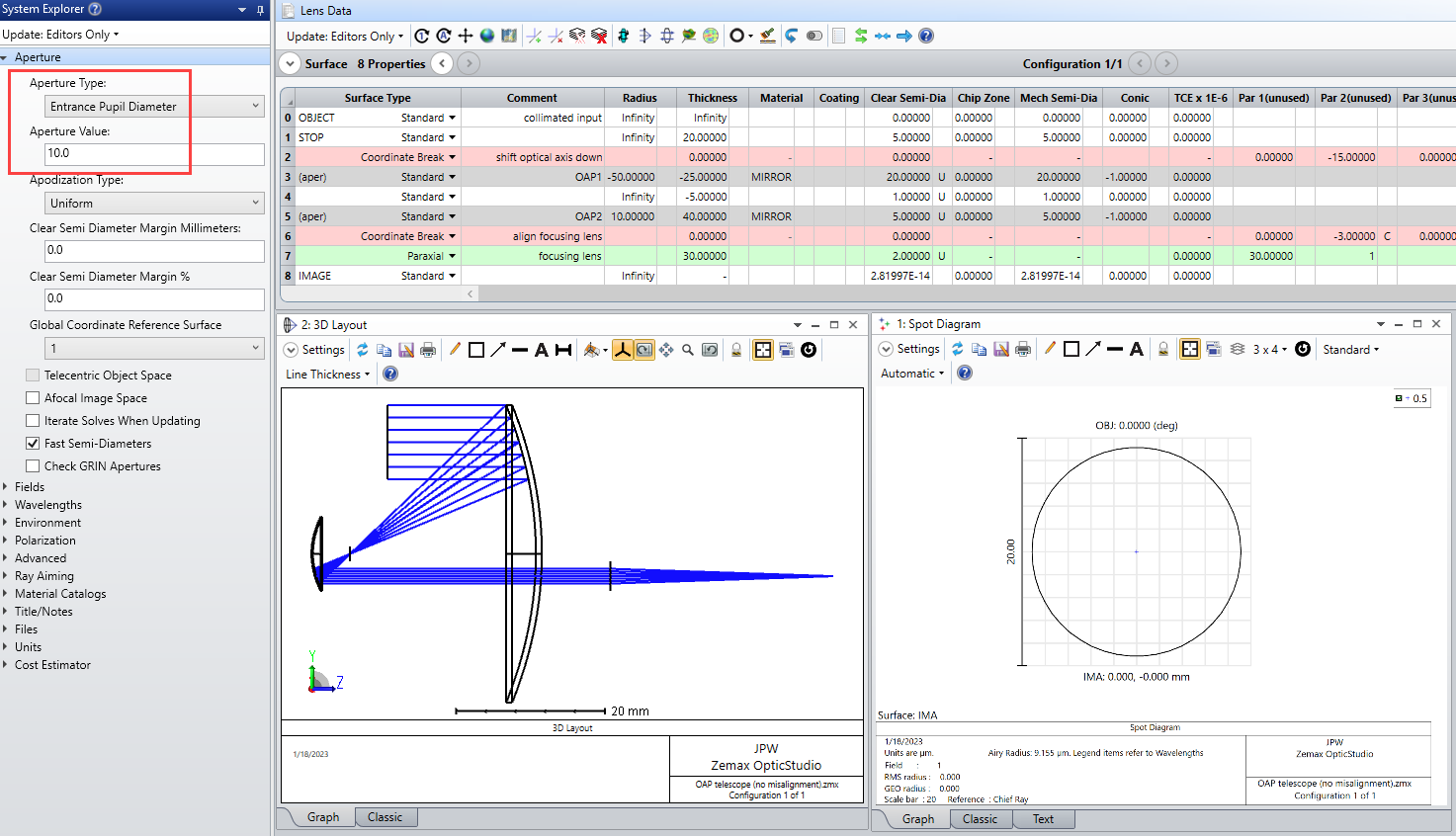Dear All,
I am just trying to design an off axis afocal parabolic telescope. The design is in principle quite simple: two off axis parabolic mirror with different focal length and the focal points coinciding.
Sending a collimated bundle of rays to the telescope and collecting the rays behind the telescope with a paraxial lens I get a coma aberration! No way to get rid of it even turning or shifting the mirrors. Or better, moving the mirrors I can get a round spot but much larger then the Airy disk.
My question is simple:Why? It should image a perfect point.
I have tried in both Afocal and focal mode. In Afocal mode (which should be the wrong mode) i get a round spot very much larger than the Airy disk and insensitive to the movement of the mirrors.
I already had a look to the Knowledgebase about, it doesn’t help me a lot.
I attach a Snapshot of the design to show it.
Thanks to everyone who could help me
Bests
Gabriele







